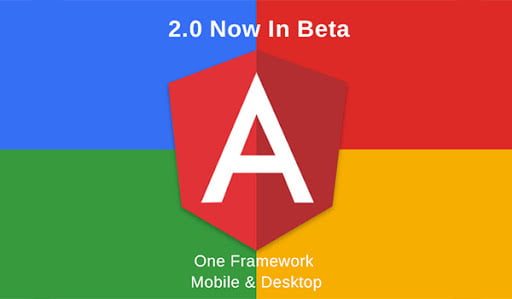
Angular’s version 1.0 was a big deal for the Web. When it was first previewed in 2009, it was an impressive framework that offered the ability to build complex single page applications in the browser.
Now, six years on, it’s reached version 2.0 and entered a new era after a long development cycle. Angular 2 brings dramatically improved speed, wider browser support and cross-platform development.
Angular Universal, a new feature in 2.0, is aimed at reducing wait time while the application is loading by pre-rendering the first view on the server, which is then sent to the visitor while loading the site. (Reference by TNW).
While Angular 2 still focuses on building web apps, it’s worth noting that Angular 2 now also allows developers to build cross-platform native apps for Android and iOS with the help of NativeScript and React Native.
Another area Google focused on is speed. According to Google, Angular 2 renders and updates pages up to eight times faster than Angular 1.
There are still a couple of improvements Google plans to make to Angular 2 before its final release. The team says it plans reduce the framework’s binary size, for example, and to add improved international support and support for animations. The team also plans to work on Angular 2’s documentation, improve startup and run time performance, and add more material design components to the framework.
As Google engineering director Brad Green tells me, the team made a number of small changes to the framework over the course of the latest testing period. “In one recent breaking change, we switched from kebab-case element names to camel Case names so that developers can use the same name in their templates as they do in JavaScript,” he tells me. “We also realized that the new world of JavaScript requires a number of tools and processes that can slow down development. From transpilers to build tools to minifiers to continuous integration scripts to deployment.”
Green also told me that Google’s decision to write Angular 2 in Type Script – which was originally developed at Microsoft – has been well received by developers and many now plan to write their own Angular 2 apps in Type Script, too, it seems. “We’d assumed most folks would want to continue using ES5,” he said. “We were surprised that the majority of folks said they’d be using Type Script.”
He also noted that the team recently launched the Angular CLI project to help encapsulate all of these new tools into a command line tool.(Reference by Techcrunch)
Related Posts...
Mobile AppsSocial Media UpdatesTechnologiesWhat is New!What's Hot
Dec 11th, 2025
Artificial Intelligence has rapidly transformed from an emerging trend into a powerful force reshaping industries worldwide. As we step into 2026, AI app development has reached a new level of […]
Read more
Nov 27th, 2025
The global beauty and cosmetics industry is evolving at lightning speed, driven by new-age consumers who crave personalisation, convenience, and immersive digital experiences. Mobile apps are at the centre of […]
Read more
Nov 25th, 2025
Artificial intelligence has steadily moved from being a personal productivity assistant to becoming a powerful team collaborator. OpenAI’s latest feature—Group Chats in ChatGPT—marks one of the biggest steps yet toward […]
Read more
